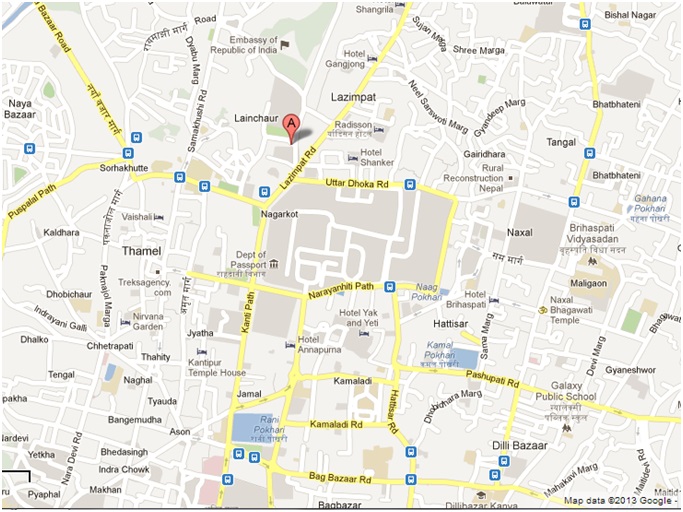Kathmandu, June 5th – A public Rainwater Resource Center (RC) was inaugurated in the premises of Nepal Japan Children Library in Lainchaur, Kathmandu on June 5th , 2013. This ‘one of a kind RC’ was established by the efforts of Center for Integrated Urban Development (CIUD), Gusingal, Lalitpur with the funds made available by UNDP-Nepal and Coca Cola Company. During the implementation of the year long project ‘Invaluable Drops- Recharge Kathmandu’.
Kathmandu, June 5th – A public Rainwater Resource Center (RC) was inaugurated in the premises of Nepal Japan Children Library in Lainchaur, Kathmandu on June 5th , 2013. This ‘one of a kind RC’ was established by the efforts of Center for Integrated Urban Development (CIUD), Gusingal, Lalitpur with the funds made available by UNDP-Nepal and Coca Cola Company. During the implementation of the year long project ‘Invaluable Drops- Recharge Kathmandu’. The resource center was set up in order to present Rainwater harvesting and Recharge (RWH/R) as a viable technology to tackle the evident water stress in the valley, and promote it as an effective means to adapt to climate change.
The fact that Kathmandu valley suffers from extreme water stress doesn’t need any more validation. Recent reports suggest that Kathmandu Upatyaka Khanepani Limited (KUKL), the valley’s go-to organization for water supply only fulfills about 33% of the valley’s water demand . The residents meet the 67% of water deficit by buying water from water businesses, extracting water from traditional dug wells, stone spouts and private boring or dug wells.
Most wells and stone spouts dry off by mid-winter and water gets scantier for families in the valley. The significant diminution of water levels in wells and water flow in stone spouts is the result of Kathmandu’s Groundwater (GW) level going down year after year. Rapid population growth increases water demand which drives excessive GW extraction from underlying aquifers and depletes them in the process. Rapid unmanaged urbanization covers up open spaces via paved streets, houses and limits the volume of rainwater percolation abetting GW decline. In lieu of urbanization and population increase, global climate change effects will only add to the mounting water woes for residents as changing precipitation patterns and extreme temperatures will exacerbate water paucity.
With the long awaited Melamchi Water Supply Project seemingly ages away, Kathmandu’s leading authorities regarding water supply are running out of ideas to meet the capital’s water demand. The best way out of this parched scenario is residents taking charge of the situation and installing decentralized water supply mechanisms. Rainwater Harvesting fits the profile; collection of rainwater that falls free from the skies to use it for daily water intensive purposes seems like a perfect match for urban Kathmandu. Kathmandu receives an average rainfall of 1,365 mm per year, and a house with a rooftop surface area of 100 sq m has the potential to collect more than 130,000 liters of rainwater in that year. Accordingly, artificial rainwater recharge will help divert excess rainwater into the ground and supplement ground water levels in the underlying shallow aquifers and help in dealing with urban flooding issues.
The resource center will serve as an information hub for residents in Kathmandu valley and all over Nepal and will provide detailed information about RWH/R. It will disseminate information about government and municipal efforts to promote Rainwater Management and will try to dispel the general perception about RWH/R being an expensive system which only affluent people can afford to install. It will provide technical support to people who are interested in installing systems in their own households or localities and will organize orientations, workshops and interactions to promote rainwater harvesting and recharge in the valley and beyond. The resource center will be furnished with a demonstration RWH/R model which will display the components of the system. It will also serve as a connecting link between interested customers and RWH/R intensive entrepreneurial ventures by providing customers information about RWH/R service vendors in and around Kathmandu.
Location of the resource center:

